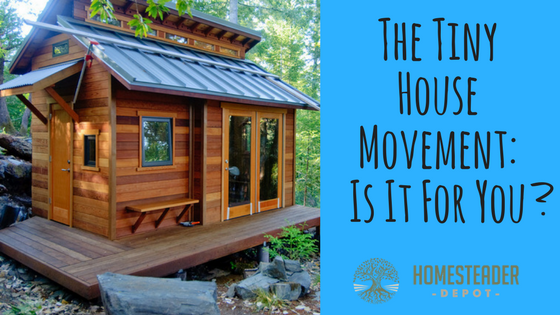The tiny house movement, which has gained a lot of traction among those wishing to live more simply, self-sufficiently, or simply economically.
It is essentially exactly what it sounds like. More and more people are opting to live in small, or rather, tiny houses, often off-grid or on a homestead as well.
The idea is simple. Less stuff means less energy cost, a more minimalist lifestyle, and a simpler life. Sometimes, owners are motivated by the incredibly cheap building costs, often constructing them by hand, other times, it’s the cheap energy costs of powering, heating, and cooling a significantly smaller space.
They are a popular option for first-time homesteaders, who want to put their money into developing their land for animal husbandry and agriculture, and need a simple, affordable, sustainable dwelling.
The tiny houses can often be powered with solar power, or heated with a small woodstove. They have compact, efficient kitchens, and clever ways to hide away beds, storage, closet space, bookshelves, etc.
If you are considering a tiny house for your family, there are a few considerations you’ll want to take into account. The biggest, of course, being space. For a single person, couple, or family with only one child, a tiny house will often be a great option. But for larger families, while you can still absolutely minimize floor space and build a simple, self-sufficient dwelling, more people will simply mean more floor space, and more storage, required. This doesn’t mean big families can’t participate in the tiny house movement in their own way though!
The spirit of the tiny house movement is applicable to many types of living situations. Wherever you are, you can still live more minimally, find ways to reduce your energy costs, and try to reduce your belongings down to only what you need. It’s simpler than it sounds!
If you enjoyed this, you might also like….


